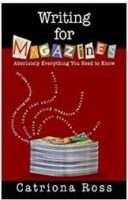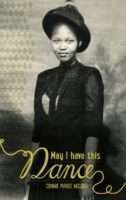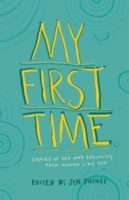This process is about finding the right magazines, editors and readers for you. It’s about reaching the people and publications who need you and your writing. Here’s how to put yourself forward:
Think of yourself as a brand. What do you offer that other writers don’t? What’s your USP (Unique Selling Proposition)? Is it your background in science, your enthusiasm for popular psychology, your ability to explain difficult concepts in an accessible way? What sort of brand do you aim to be? By thinking this over and making a few notes, you’ll start moving in the right direction.
Get yourself out there. You – yes, you – can become a household name as a magazine journalist. Being known brings an abundance of benefits: recognition for the work you do, job satisfaction, awards, prestige, abundant commissions, better rates of pay, press trips to exotic places, invitations to parties and events, seats on panel discussions and radio and TV talk shows, assignments to interview the Dalai Lama/Pamela Anderson/Will Smith/ (insert the person you’ve always wanted to meet), and more. By making a commitment to your name, face and work, and taking opportunities to promote yourself, you’ll start building your profile in the public arena.
Look good. I’m not saying you need to Extreme Makeover yourself to look like a supermodel to crack it as a writer. Be yourself, but look your best self when you’re out networking or visiting magazine offices. When you present yourself as a well-groomed, stylishly dressed and confident person, you automatically boost your ratings (and you feel faaabulous.) Some journalists feel that fashion is for the intellectually challenged, and shuffle around feeling superior in moth-holed tracksuits. I beg to differ. So did my editor during my years at Cosmopolitan, Vanessa Raphaely, who swore by the following basics: a good haircut, a well-tailored coat and a great pair of shoes. Dress like the successful writer you want to be.
Get shot. Have a series of flattering, cheesecakey publicity shots taken, so you have something sexy to send when editors ask you for a head-and-shoulders photo for their contributors’ page. (Featuring on contributors’ pages is brilliant exposure. Just say yes.) Ask a friend with a digital camera and some photography experience to take the pictures, in golden morning or late afternoon light. Include some serious-faced ones, with you looking all learned and writerly, and some more fun, smiling shots.
Write about yourself. A story about you, with a professional photograph alongside, helps brand you onto the public’s awareness. Approach magazines with ideas for opinion pieces and first-person stories about your interesting experiences. Check a few magazines to find those with column slots regularly filled by freelancers, preferably featuring a head-and-shoulders picture of the writer. Don’t overdo it and insist on writing solely about your life – you’ll just come across as a megalomaniac egotist. (Of course, some writers have made a living doing exactly that, and have become famous for being themselves, but I wouldn’t recommend it until later in your career.)
Get business cards printed. Ensure your cards include all your contact details – phone numbers, email address, blog address and website if you have them, plus any other relevant details about you (for example, ‘Mark Mason, writer, journalist, book editor’). As a writer, you need to be a networker par excellence. Schmoozing, in fact, is half the fun of the job. Keep a stack of your business cards with you at all times – in your wallet, or in a cool little card holder – and hand them out often.
Have your own website. A writer’s website is an excellent platform for showcasing your skills and experience and building your brand. Yours might include biographical information, a synopsis of your work experience, a series of publicity photos editors can download and use (for contributors’ pages, for example), writing samples and examples of your best stories.
Speak when you’re given the chance. If you follow my advice and become a professional schmoozer, opportunities to talk about yourself and your work will come up. There’ll be invitations to speak to groups of school kids, on panel discussions, at local writer’s clubs. Wherever possible, promote yourself and what you do. The more people who know your face the better. Tell your audience about your latest feature and let them know which magazine it’s in so they can go out and buy it.
If you write topical or controversial features, you may be asked to speak on radio or TV about your stories. Accept these invitations, even if they freak you out at first. (You’ll soon realise that chatting to a talk-show host isn’t nearly as scary as you think. And it’s character building; your parents will be proud.) Editors and features editors are often reluctantly hauled away from their busy desks to speak on radio and TV about the month’s line-up of features: offer to speak about the stories you’ve written on their behalf, and your editors may just call on you to fill in for them when they’re too hectic to do an hour-long radio show.





